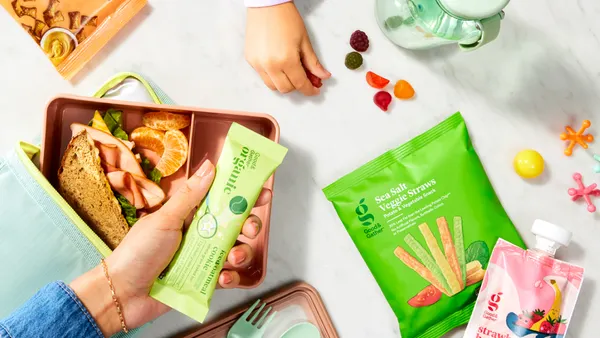Dive Brief:
- The USDA is looking to expand the variety and improve the nutritional quality of foods provided to participants in the Special Supplemental Nutrition Program for Women, Infants and Children (WIC), the agency announced last Thursday.
- The updates to WIC would place greater emphasis on fruits and vegetables and give state officials more freedom to develop food packages that reflect people’s dietary needs and preferences.
- USDA’s efforts to update WIC follow the Biden administration’s release in September of a national strategy aimed at encouraging healthier eating and ending hunger in the United States by 2030.
Dive Insight:
The improvements the USDA’s Food and Nutrition Service (FNS) wants to make to WIC are aimed at increasing the program's appeal to participants and providing people with foods that reflect advances in nutrition science, according to the government.
Officials said their proposal is science-based and reflects guidance in a review of WIC conducted by the National Academies of Sciences, Engineering and Medicine and the USDA’s Dietary Guidelines for Americans, 2020-2025. About 6.2 million people were enrolled in WIC in fiscal year 2021, according to the USDA.
Under the changes the FNS has proposed, WIC participants would have access to a wider selection of dairy and egg products, including different sizes of yogurt as well as soy- and tofu-based products. The FNS also wants to add more whole grain options, such as quinoa, blue cornmeal and whole wheat bagels, to the program.
Other modifications the FNS is looking to make to WIC include providing participants with better access to canned fish, increasing access to infant formula for mothers who partially breastfeed their children and adding canned beans to the assortment of foods included in the program.
The government will accept comments about the proposal, which was published Monday in the Federal Register, through Feb. 21, 2023.
The Food Industry Association (FMI) said the updates to WIC help grocers comply with WIC guidelines by better aligning the program with available products and offering added flexibility regarding packaging.
“It is vital that the WIC program reflects consumers’ needs and preferences, provides for commercial accessibility to align with product size and availability that helps both consumers and retailers, and is consistent with the Dietary Guidelines for Americans,” FMI Chief Public Policy Officer Jennifer Hatcher said in a statement.
The National Grocers Association also praised the proposal.
“An updated food package that includes foods that families want to eat will lead to improved consumption of the nutrients needed by moms, babies and young children, and support retailers’ participation in the program,” Stephanie Johnson, vice president of government relations for NGA, said in a statement.














